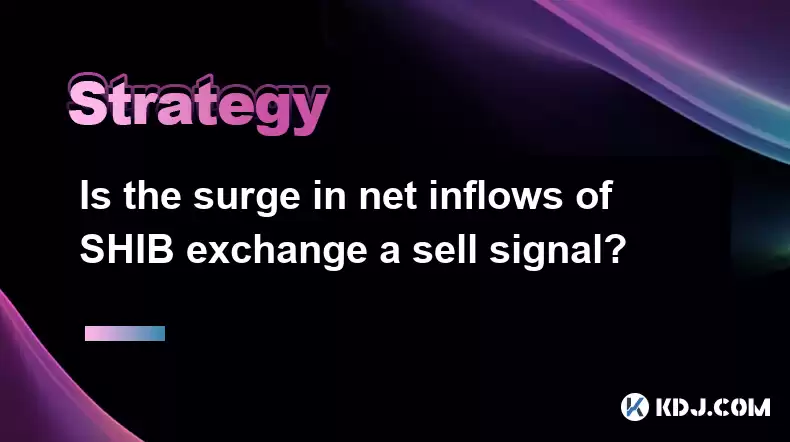-
 Bitcoin
Bitcoin $114500
-0.31% -
 Ethereum
Ethereum $3648
1.11% -
 XRP
XRP $3.033
-0.27% -
 Tether USDt
Tether USDt $0.9999
-0.01% -
 BNB
BNB $758.5
-0.32% -
 Solana
Solana $167.5
1.48% -
 USDC
USDC $0.9998
-0.02% -
 TRON
TRON $0.3331
0.74% -
 Dogecoin
Dogecoin $0.2039
0.25% -
 Cardano
Cardano $0.7419
-0.46% -
 Hyperliquid
Hyperliquid $39.21
2.66% -
 Stellar
Stellar $0.4049
-1.95% -
 Sui
Sui $3.483
-0.56% -
 Bitcoin Cash
Bitcoin Cash $570.8
2.89% -
 Chainlink
Chainlink $16.67
-0.57% -
 Hedera
Hedera $0.2470
-1.57% -
 Ethena USDe
Ethena USDe $1.001
0.00% -
 Avalanche
Avalanche $22.36
1.52% -
 Litecoin
Litecoin $123.4
4.35% -
 UNUS SED LEO
UNUS SED LEO $8.989
0.09% -
 Toncoin
Toncoin $3.324
-2.40% -
 Shiba Inu
Shiba Inu $0.00001219
-1.30% -
 Uniswap
Uniswap $9.811
2.54% -
 Polkadot
Polkadot $3.662
-0.07% -
 Monero
Monero $295.5
-3.85% -
 Dai
Dai $1.000
0.01% -
 Bitget Token
Bitget Token $4.345
0.24% -
 Cronos
Cronos $0.1380
0.95% -
 Pepe
Pepe $0.00001044
-1.14% -
 Ethena
Ethena $0.5981
-4.24%
Is the surge in net inflows of SHIB exchange a sell signal?
A surge in SHIB net inflows to exchanges may signal selling pressure, but investors should consider broader market context before acting.
Apr 21, 2025 at 07:28 pm

The surge in net inflows of SHIB (Shiba Inu) to exchanges can be a critical indicator for investors and traders within the cryptocurrency market. This phenomenon often sparks debates about whether it signals an impending price drop or if it could be interpreted differently. In this article, we will delve into the implications of increased SHIB net inflows to exchanges, analyze historical data, and explore other factors that might influence this metric.
Understanding Net Inflows to Exchanges
Net inflows to exchanges refer to the total amount of a cryptocurrency, in this case, SHIB, that is transferred into exchange wallets minus the amount that is withdrawn. When there is a significant increase in net inflows, it generally suggests that more holders are moving their tokens to exchanges, potentially with the intent to sell. This movement can be interpreted as a sell signal because it might indicate that holders are preparing to liquidate their positions.
However, it's crucial to consider the broader context. A surge in net inflows might not always be a definitive sell signal. For instance, it could also mean that investors are moving their SHIB to exchanges to trade for other cryptocurrencies, to participate in staking or lending programs, or to take advantage of new features offered by the exchange.
Historical Data and SHIB's Net Inflows
To better understand the implications of a surge in SHIB net inflows, examining historical data can be insightful. Historically, significant increases in net inflows to exchanges have often preceded price corrections or bearish trends for SHIB. For example, in the months leading up to major price drops, data from on-chain analytics platforms like Glassnode and CryptoQuant have shown spikes in SHIB's net inflows.
- In Q2 2021, SHIB experienced a notable surge in net inflows to exchanges, which was followed by a significant price correction. This event supports the theory that increased net inflows can be a precursor to selling pressure.
- In Q4 2021, another spike in net inflows coincided with a period of heightened volatility and a subsequent price drop, reinforcing the notion that this metric can be a reliable indicator of market sentiment.
However, it's important to note that these historical patterns are not always consistent. There have been instances where increased net inflows did not lead to immediate price declines, suggesting that other market dynamics were at play.
Other Factors Influencing SHIB's Market Dynamics
While net inflows to exchanges are a significant metric, they are just one piece of the puzzle. Several other factors can influence SHIB's market dynamics and should be considered alongside net inflows:
- Market Sentiment: The overall sentiment in the cryptocurrency market can greatly impact SHIB's price. Positive news or developments within the SHIB ecosystem can offset the bearish signals from increased net inflows.
- Trading Volume: High trading volumes can indicate strong interest and liquidity in SHIB, which might counteract the effects of increased net inflows.
- Regulatory News: Announcements from regulatory bodies can influence investor behavior and the flow of SHIB to and from exchanges.
- Technical Analysis: Indicators such as moving averages, RSI, and MACD can provide additional insights into SHIB's potential price movements.
Interpreting Net Inflows in Real-Time
When monitoring SHIB's net inflows in real-time, it's essential to use reliable data sources and consider the broader market context. Here are some steps to effectively interpret net inflows:
- Monitor Data Sources: Use platforms like Glassnode, CryptoQuant, or CoinMetrics to track SHIB's net inflows to exchanges. These platforms provide real-time data and historical charts that can help identify trends.
- Analyze Trends: Look for patterns in the data, such as sustained increases in net inflows over several days or weeks. Sudden spikes might be less indicative of long-term trends.
- Consider Market Context: Evaluate other market indicators, such as price trends, trading volumes, and news events, to understand the broader context in which the net inflows are occurring.
- Use Multiple Indicators: Combine net inflow data with other technical and fundamental analysis tools to form a more comprehensive view of SHIB's market position.
Case Studies of SHIB's Net Inflows and Price Movements
Examining specific case studies can provide further clarity on how net inflows have historically impacted SHIB's price. Here are two notable examples:
- Case Study 1: May 2021 Surge: In May 2021, SHIB experienced a significant surge in net inflows to exchanges. This coincided with a period of heightened interest in meme coins and a subsequent price correction. The data showed that the net inflows peaked just before the price began to decline, suggesting that investors were indeed selling off their holdings.
- Case Study 2: November 2021 Spike: In November 2021, another spike in SHIB's net inflows was observed. This time, the increase was less pronounced, but it still preceded a period of volatility and a modest price drop. The case illustrates that even smaller increases in net inflows can signal potential selling pressure.
Conclusion on Net Inflows as a Sell Signal
While a surge in SHIB's net inflows to exchanges can be a strong indicator of potential selling pressure, it is not a foolproof sell signal. Investors should consider multiple factors and use a holistic approach to decision-making. By combining net inflow data with other market indicators and staying informed about broader market trends, investors can make more informed decisions regarding their SHIB holdings.
Frequently Asked Questions
Q1: Can net inflows to exchanges be influenced by factors other than selling intentions?
Yes, net inflows to exchanges can be influenced by various factors beyond selling intentions. Investors might move their SHIB to exchanges to participate in trading, staking, lending, or to take advantage of new features offered by the exchange. It's essential to consider these possibilities when interpreting net inflow data.
Q2: How can I access real-time data on SHIB's net inflows to exchanges?
You can access real-time data on SHIB's net inflows to exchanges through various on-chain analytics platforms such as Glassnode, CryptoQuant, and CoinMetrics. These platforms provide detailed charts and metrics that can help you track and analyze net inflow trends.
Q3: Are there any tools or indicators that can help predict SHIB's price movements based on net inflows?
While no tool can predict price movements with absolute certainty, combining net inflow data with other technical indicators like moving averages, RSI, and MACD can provide a more comprehensive view of SHIB's market dynamics. Additionally, staying informed about news and developments within the SHIB ecosystem can help you make more informed predictions.
Q4: How should I react if I notice a significant increase in SHIB's net inflows to exchanges?
If you notice a significant increase in SHIB's net inflows to exchanges, it's advisable to take a cautious approach. Consider reducing your exposure to SHIB if you believe a price drop is imminent, but also evaluate other market indicators and news to ensure you have a complete picture. Diversifying your portfolio can also help mitigate risks associated with potential price declines.
Disclaimer:info@kdj.com
The information provided is not trading advice. kdj.com does not assume any responsibility for any investments made based on the information provided in this article. Cryptocurrencies are highly volatile and it is highly recommended that you invest with caution after thorough research!
If you believe that the content used on this website infringes your copyright, please contact us immediately (info@kdj.com) and we will delete it promptly.
- Altcoin Alert: Is Punisher Coin the Presale to Pounce On?
- 2025-08-06 06:50:11
- XRP Price, Bitwise, and the 2030 Forecast: Will XRP Hit the Big Time?
- 2025-08-06 06:50:11
- Ruvi AI: The AI Token Primed for CMC Listing and Explosive Growth
- 2025-08-06 06:30:13
- Michigan Pension, Bitcoin ETF, and Institutional Investment: A New Era?
- 2025-08-06 07:10:11
- Verb Technology's Bold Move: Acquisition, Rebranding, and a $558M Bet on Toncoin
- 2025-08-06 07:30:12
- Sushi's Sizzling Summer: AMA on August 6th & Market Moves!
- 2025-08-06 06:30:13
Related knowledge

How to avoid common crypto investment mistakes?
Jul 13,2025 at 01:35am
Understanding the Risks of Crypto InvestmentInvesting in cryptocurrency can be highly rewarding, but it also comes with significant risks. One of the ...

What is a long-short crypto strategy?
Jul 15,2025 at 10:56am
Understanding the Basics of a Long-Short Crypto StrategyA long-short crypto strategy is an investment approach where traders simultaneously take long ...

What is a long-short crypto strategy?
Jul 11,2025 at 01:28pm
Understanding the Basics of Long-Short Crypto StrategyA long-short crypto strategy is an investment approach where traders take both long and short po...

How to use the RSI indicator for crypto?
Jul 12,2025 at 03:56pm
Understanding the RSI Indicator in Cryptocurrency TradingThe Relative Strength Index (RSI) is a momentum oscillator used to measure the speed and chan...

Is copy trading a good strategy for crypto beginners?
Jul 12,2025 at 08:28am
Understanding Copy Trading in the Cryptocurrency MarketCopy trading is a strategy where novice traders replicate the trades of experienced investors a...

How to build a crypto portfolio with $1000?
Jul 13,2025 at 08:14pm
Understanding the Basics of Cryptocurrency InvestmentBuilding a crypto portfolio with $1000 starts with understanding the fundamentals of cryptocurren...

How to avoid common crypto investment mistakes?
Jul 13,2025 at 01:35am
Understanding the Risks of Crypto InvestmentInvesting in cryptocurrency can be highly rewarding, but it also comes with significant risks. One of the ...

What is a long-short crypto strategy?
Jul 15,2025 at 10:56am
Understanding the Basics of a Long-Short Crypto StrategyA long-short crypto strategy is an investment approach where traders simultaneously take long ...

What is a long-short crypto strategy?
Jul 11,2025 at 01:28pm
Understanding the Basics of Long-Short Crypto StrategyA long-short crypto strategy is an investment approach where traders take both long and short po...

How to use the RSI indicator for crypto?
Jul 12,2025 at 03:56pm
Understanding the RSI Indicator in Cryptocurrency TradingThe Relative Strength Index (RSI) is a momentum oscillator used to measure the speed and chan...

Is copy trading a good strategy for crypto beginners?
Jul 12,2025 at 08:28am
Understanding Copy Trading in the Cryptocurrency MarketCopy trading is a strategy where novice traders replicate the trades of experienced investors a...

How to build a crypto portfolio with $1000?
Jul 13,2025 at 08:14pm
Understanding the Basics of Cryptocurrency InvestmentBuilding a crypto portfolio with $1000 starts with understanding the fundamentals of cryptocurren...
See all articles

























































































